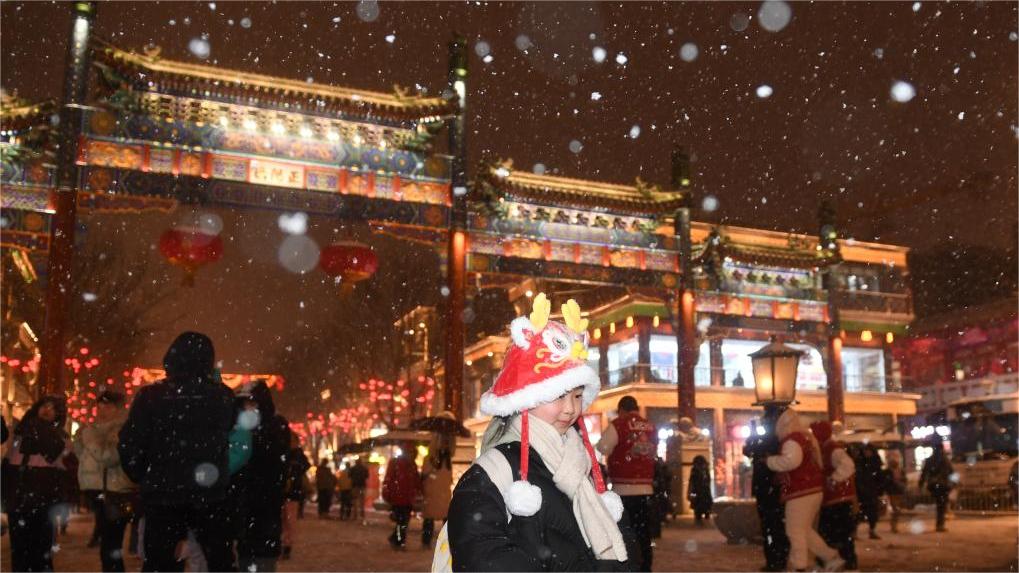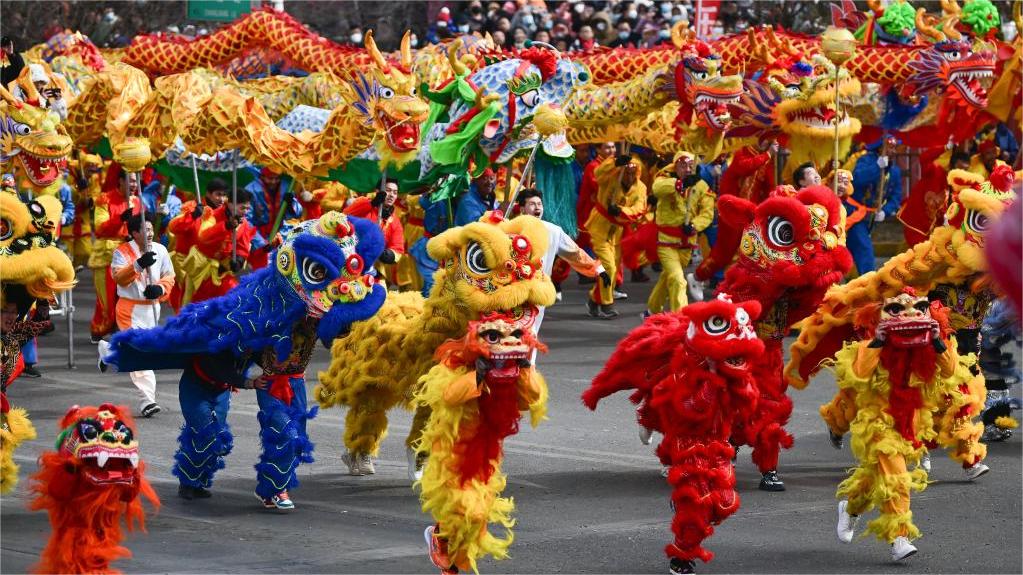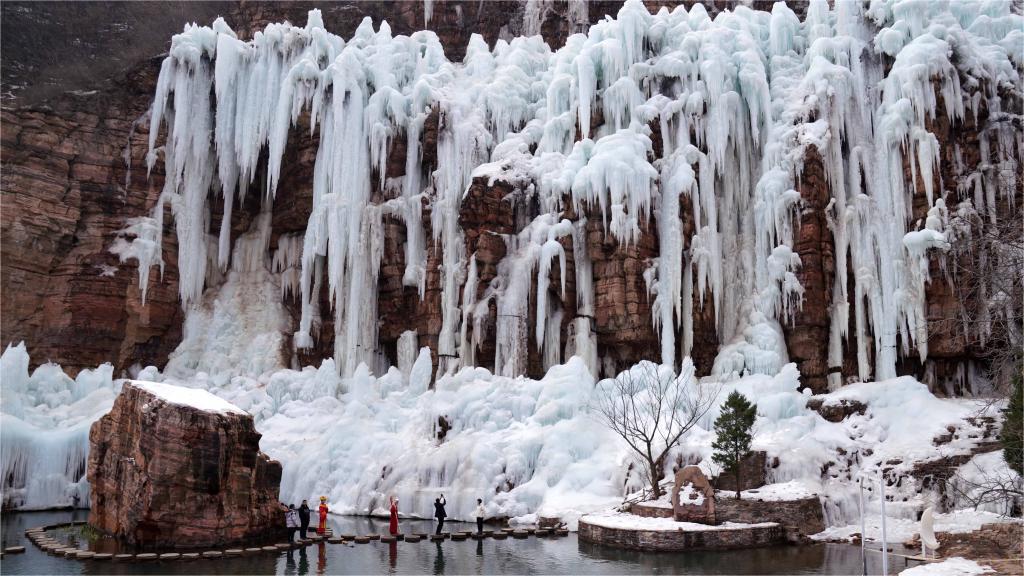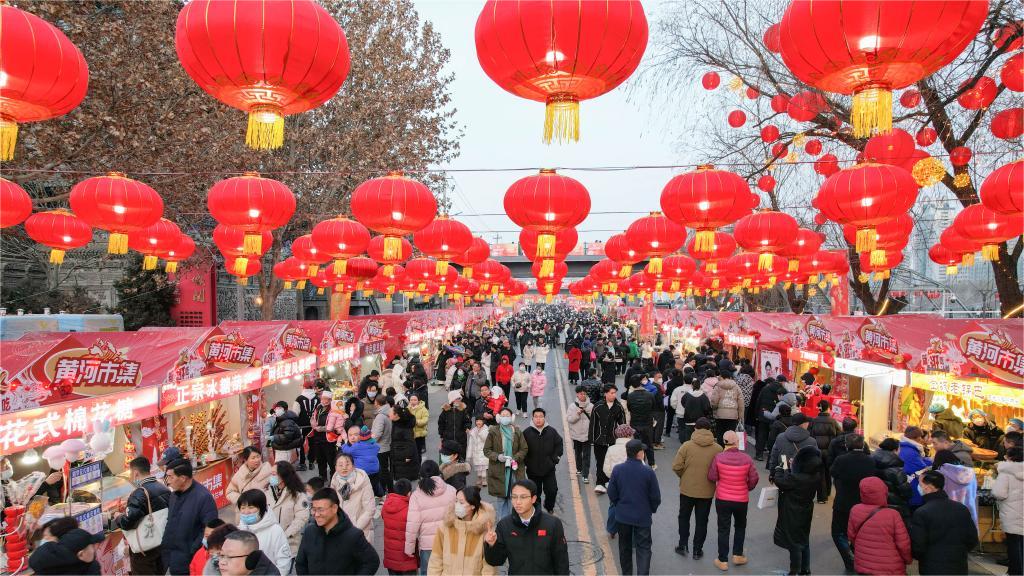Ice, snow tourism thrives in China
The arrival of winter has triggered a boom in ice and snow tourism in China. Regions across the country have offered a series of new ice and snow-related products with new scenarios based on their natural endowments and conditions, making winter sports and ice and snow tourism wildly popular.

①: Photo shows tourists at the Thaiwoo Ski Resort in Chongli district, Zhangjiakou city, north China's Hebei Province. (Photo/Li Dengyun)
②: Tourists pose for a group photo at the Saint Sophia Cathedral in Harbin, capital of northeast China's Heilongjiang Province. (Photo/Guo Junfeng)
③: Ski enthusiasts are seen at the Jiangjun Mountain ski resort in Altay, northwest China's Xinjiang Uygur Autonomous Region. (Photo/Aerdake Baisihan)
A report on China's winter tourism issued by the China Tourism Academy showed the number of people participating in ice and snow-related leisure tourism in China is expected to increase by 25 percent to 30 percent during the 2023-2024 winter season, and this sector will see the participation of over 400 million people. The revenue from ice and snow leisure tourism is likely to hit 550 billion yuan ($76.53 billion).
Harbin, capital of northeast China's Heilongjiang Province, welcomed a record-breaking more than 10.09 million visits during this year's eight-day Spring Festival holiday, from Feb. 10 to 17, an average daily increase of 81.7 percent year on year. The city raked in 16.42 billion yuan in tourism revenue, representing a remarkable 235.4 percent year-on-year growth.
As a popular destination for winter tourism, Harbin has promoted the in-depth integration of ice and snow culture with tourism to meet the tourists' diverse interests, accelerating the upgrading of its winter tourism.
"To allow visitors to better experience the ice and snow culture, Harbin has incorporated ice and snow art into the urban landscape," said Wang Hongxin, head of the Harbin municipal bureau of culture, radio, television and tourism.
During this winter season, over 70 streets and many plazas in the city have wowed tourists with their ice and snow sculptures, including a 16-meter-long ice wall with bouquets of roses blooming behind crystal-clear ice at a historical and cultural block, a giant snowman that greets visitors with a warm smile at the Harbin Music Park, and the Central Street, which is renowned for its diverse European-style architecture.
"Ice and snow are the greatest appeal to me in Harbin, allowing me to appreciate the unique ice and snow beauty of this city and the hospitality and enthusiasm of local people," said Chen Weishan, a tourist from Guangzhou, capital of south China's Guangdong Province.
Harbin has rolled out over 100 ice and snow events during this winter season, including the Harbin International Ice Sculpture Competition, public ice painting, and the Harbin Ice and Snow International Fashion Week, some of which will last until late March. The city has also encouraged business entities to launch new winter tourism products and create new business forms.
Data from internet platform Meituan showed that during the 2024 Spring Festival holiday, Harbin was among China's top 10 tourist destinations with the highest occupancy rate of local hotels on the platform. The city registered a year-on-year increase of over 106 percent in terms of its cultural and tourism consumption during the period.
"Building upon our rich ice and snow culture, Harbin is integrating ice and snow landscapes with music culture, folk experience, romantic art, sports events, and health and wellness, striving to bring tourists a brand new cultural tourism experience," Wang said.
The Chongli district of Zhangjiakou city, north China's Hebei Province is also a destination for winter tourism. During the Spring Festival holiday, the district received 473,800 tourist visits, which translated to a tourism income of 521 million yuan.
The Chongli ice and snow tourist resort, the first national-level tourist resort in Hebei Province, is currently home to eight ski resorts, including the Genting Snow Park, Thaiwoo Ski Resort and Wanlong Ski Resort, with the total length of the ski runs reaching 166 kilometers. It also offers colorful cultural experience activities.
"We have carried out a campaign to improve tourism services, introduced 10 premium tourist routes, and released service standards and safety management rules on ski resorts, continuously enhancing the name card of ice and snow tourism," said Wu Yun, deputy head of the sports bureau of Chongli district.
To boost public enthusiasm for winter sports, Altay in northwest China's Xinjiang Uygur Autonomous Region has invested over 7 billion yuan in 10 alpine, cross-country and backcountry ski resorts in recent years, with a total of 232 ski runs spanning 248 kilometers in length.
Since 2018, Altay has incorporated skiing into physical education courses for primary and secondary school students, the first city to do so in China.
During the Spring Festival holiday, the Altay region received domestic tourist visits of more than 1.02 million, generating tourism revenue of 719 million yuan, up 24.73 percent and 40.32 percent year on year, respectively.
Photos
Related Stories
- Why Middle East becomes popular holiday choices for Chinese tourists?
- Tourism boom continues in China's "ice city" Harbin during Spring Festival holiday
- Beijing illuminates new winter tourism
- Digital technologies accelerate innovation in China's tourism market
- In Numbers: Booming tourism and consumption during 2024 Spring Festival Holiday
- Winter sports in China eye white-hot growth
- China's domestic tourism market surges during Spring Festival holiday
- Festival spending a long-tail economic boost
- Interview: Australia hopes China to be its top tourism market again, says tourism chief
- Visa-free travel to boost tourism for China, Thailand
Copyright © 2024 People's Daily Online. All Rights Reserved.









